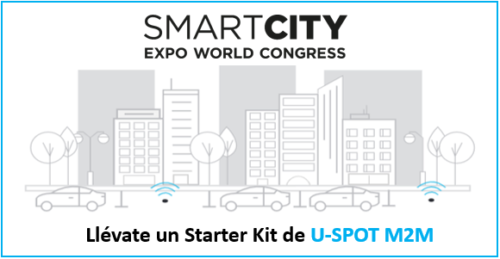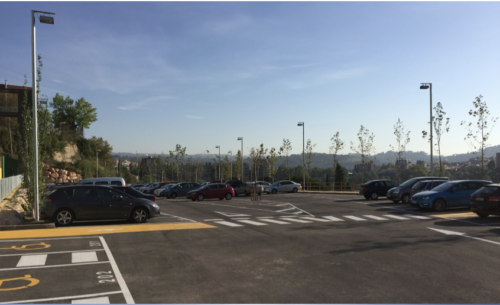The misuse of loading and unloading areas is problem caused by drivers who park in them improperly, which impacts very negatively on urban mobility. Beyond that, it directly involves an inappropriate and fraudulent use of areas intended for specific vehicles transporting goods or the work of companies that receive supplies or materials each day.
It is therefore necessary that the different players responsible for managing parking spaces in cities should join forces with the private companies also involved in this work. The main reason is the development of solutions for controlling loading and unloading areas to be sure they are used properly. Doing so will have positive consequences for companies in their work and for urban mobility, which will be more orderly and sustainable.
These applications are an option that is on the table to help councils and companies to manage regulated parking spaces much more efficiently. With the result that there is much more effective control and greater productivity in these areas.
At Urbiotica, the company in which we have developed parking control solutions for loading and unloading areas, we want to add our grain of sand to confront this challenge of efficient urban mobility.
Loading and Unloading
Difficulties in managing loading and unloading areas
The constant growth in city traffic combines with the reduction of parking space due to the extension of green areas, pedestrianisation and cycle lanes. Available parking spaces are increasingly used for services such as loading and unloading, as well as for specific uses such as people with reduced mobility and electric vehicles. This scenario poses challenges for the efficient management of loading and unloading zones in urban areas. When drivers find themselves with fewer parking options, they end up parking in these spaces, hindering those vehicles actually authorised to do so.
Inappropriate parking and access blocking come with another factor affecting efficiency, which is the disruption of parking for loading and unloading operations by unauthorised vehicles. This has a negative impact on companies’ logistics, the productive use of time and the achievement of objectives. At a broader level, this problem produces a chain effect that affects urban mobility, since vehicles without a permit take spaces intended for transport or logistics company employees, forcing them to park in the wrong places or to double-park, which is an obstacle to traffic flow.
Given these challenges of sustainable mobility in cities, the misuse of loading and unloading areas must necessarily be addressed. The question arises: What technological solutions can be applied to guarantee correct and efficient use?
How to put an end to the misuse of loading and unloading areas?
In answer to the question above, the best way to prevent fraudulent use of loading and unloading zones by unauthorised drivers is technology. Specifically, loading and unloading control solutions to improve urban logistics and detect unauthorised vehicles in these places. We will explain these two methods.
Guidance solutions for deliveries and alerts to wardens when violations occur
First of all, there are guidance solutions such as FastPrk that provide information regarding the occupation of loading and unloading areas. This helps deliveries quickly find available spaces for loading and unloading. It reduces the time wasted looking for places and improves efficiency in logistics operations. Furthermore, others such as ParkCtrl are used to control parking time and verify drivers’ authorisation, promoting fluid rotation in these loading and unloading areas.
This improves urban mobility and increases the delivery and logistics companies’ employee productivity. The benefits of using these solutions include a 28% reduction in search time, a 16% reduction in route time, and a 12.4% reduction in the distance travelled.
The solution also detects violations in real time and sends alerts to the wardens when an unauthorised vehicle parks or when the time allowed is exceeded, which favours the availability of places and avoids double parking and chaos. The ParkCtrl solution allows councils and companies to ensure compliance with regulated parking regulations by centralising information and optimising the wardens’ work.
Detection of single-space occupancy using IoT sensors or Artificial Intelligence
Secondly, there are solutions based on single-space detection systems using U-Spot parking sensors or using Artificial Intelligence through cameras and U-Spot VISIO software. They detect vehicles entering and leaving each parking space in real time and thereby reduce infringements in the use of loading and unloading zones in cities.
The solutions allow precise and effective control of parking space users, guaranteeing compliance with parking regulations while respecting driver privacy following the General Data Protection Regulations (GDPR). Combined with the use of the mobile application, it can be identified whether or not a driver is authorised to park in the loading and unloading zone.
One of the competitive advantages of this solution is the generation of alerts in cases of infringement. The wardens are notified when an unauthorised user parks in a space, or if they exceed the allowed time, and can then go directly to the offending space instead of making the usual long vehicle-to-vehicle surveillance. This streamlines the process and increases efficiency.
The future of logistics management in cities
In this article we have tried to explain how to solve one of the issues that affects sustainable mobility in cities through the application of advanced, reliable and respectful technologies with the privacy and data protection of all drivers.
It is clear that we are facing a multifaceted challenge: improving urban mobility to reduce air pollution; promoting the appropriate use of areas for loading and unloading operations, with the component of ethics and individual responsibility of unauthorised drivers; and developing increasingly advanced technologies that respect citizens’ rights while facilitating the increase in business productivity. The conclusion is that the future of logistics management in cities and the end of the misuse of loading and unloading areas involves these technological solutions with the transmission of information and data in real time, in the Cloud data management and advanced communication networks.

